

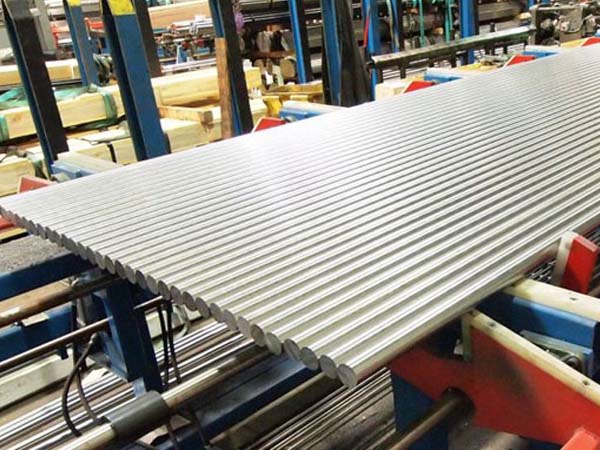

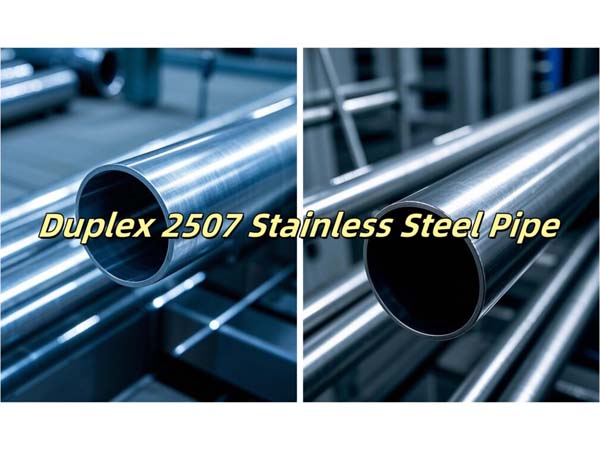

Phone
+86-731-82250427
Address
25th floor, C3 Building, Wanda Plaza, Kaifu District, Changsha, Hunan Province, China.
 May 24 2023
May 24 2023Common knowledge of surface treatment of stainless steel (1), Overview of surface treatment of stainless steel has a unique strength, high wear resistance, superior corrosion resistance, and not easy to rust and other excellent characteristics. Therefore, it is widely used in the chemical industry, food machinery, electromechanical industry, household appliances industry and home decoration, finishing industry.
The application and development prospects of stainless steel will be more and more extensive, but the application and development of stainless steel largely determine the development degree of its surface treatment technology. 2. Common types of stainless steel 1. Stainless steel varieties
(1) The main components of stainless steel: generally contain chromium (Cr), nickel (Ni), molybdenum (Mo), titanium (Ti), and other high-quality metal elements.
(2) Common stainless steel: chrome stainless steel with Cr≥12% or more; nickel-chromium stainless steel with Cr≥18% and Ni≥12%.
(3) Classification from stainless steel metallographic structure: there is austenitic stainless steel, for example, 1Cr18Ni9Ti, 1Cr18Ni11Nb, Cr18Mn8Ni5. Martensitic stainless steel, for example, Cr17, Cr28, etc. Generally called non-magnetic stainless steel and stainless steel with magnetic. Three, commonly stainless steel surface treatment methods Commonly used stainless steel surface treatment techniques have the following treatment methods: 1. Surface natural whitening treatment; 2. Surface mirror brightening treatment; 3. Surface coloring treatment.
1. Surface natural whitening
During the processing of stainless steel, a black oxide scale is produced by coiling, edging, welding or artificial surface fire baking and heating treatment. This hard gray-black oxide scale is mainly composed of NiCr2O4 and NiF EO4 components. In the past, hydrofluoric acid and nitric acid were generally used for strong corrosion removal. However, this method is costly, pollutes the environment, is harmful to the human body, and is more corrosive, and is gradually being eliminated. At present, there are two main methods of oxide scale treatment:
⑴ Sandblasting (pill) method: It mainly uses the method of spraying micro glass beads to remove the black scale on the surface.
⑵Chemical method: Use a non-polluting pickling passivation paste and a non-toxic cleaning solution with inorganic additives at normal temperature for dipping. So as to achieve the purpose of whitening treatment of stainless steel. After treatment, it basically looks a dull color. This method is more suitable for large and complex products. 2. Brightening treatment method of stainless steel surface mirror surface
According to the complexity of stainless steel products and the requirements of users, mechanical polishing, chemical polishing, electrochemical polishing, and other methods can be used to achieve mirror gloss. The advantages and disadvantages of these three methods are shown in Table 1-
1: Table 1——1 Project Method Advantages and Disadvantages Applicable Products Remarks
The mechanical polishing has good leveling, bright labor intensity, serious pollution, simple workpieces, small and medium products, the whole product has a gloss that is not complex, and it is difficult to process the gloss decreases, and the complex parts cannot be processed uniformly. High gloss retention time is not long
Chemical polishing requires less investment, and the brightness of complex parts is insufficient. The polishing solution needs to be added to complex products. Brightness requires that small-batch processing is more cost-effective and can be thrown away. High efficiency, temperature, and gas overflow. Products that need low pass can use fast-speed equipment. Electrochemical polishing achieves mirror gloss, long one-time investment and large, complex products require high-end small and medium-sized products, process stability, easy operation, periodic maintenance, process stability, tooling, auxiliary electrodes, mass production require a long-term mirror surface can be widely promoted Use less pollution, low cost, produce cool products, good anti-pollution properties, common sense of stainless steel surface treatment (2) surface coloring treatment, stainless steel coloring not only gives stainless steel products a variety of colors, increases the variety of products, but also improves product wear resistance and corrosion resistance.
The stainless steel coloring methods are as follows:
1. Chemical oxidation coloring method;
2. Electrochemical oxidation coloring method;
3. Ion deposition oxide coloring method;
4. High-temperature oxidation coloring method;
5. Gas-phase cracking and coloring method.
A brief overview of the various methods is as follows:
1. The chemical oxidation coloring method is the color of a film formed by chemical oxidation in a specific solution. There are a dichromate method, a mixed sodium salt method, a sulfurization method, an acid oxidation method, and an alkaline oxidation method. Generally, "INCO" (INCO) is used more, but to ensure that a batch of products has the same color, it must be controlled by a reference electrode.
2. Electrochemical coloring
It is the color of the film formed by electrochemical oxidation in a specific solution.
3. Ion deposition oxide coloring chemical method
The stainless steel workpiece is placed in a vacuum coating machine for vacuum evaporation plating. For example Titanium-plated watch cases and watch bands are generally golden yellow. This method is suitable for large-scale product processing. Because of the large investment and high cost, small-batch products are not cost-effective.
4. High-temperature oxidation coloring method
It is in a specific molten salt, immersed in the workpiece to maintain certain process parameters, so that the workpiece forms a certain thickness of the oxide film, and shows a variety of different colors.
5. Gas-phase cracking and coloring method
The gas-phase cracking and coloring method is more complicated and less used in the industry.
4. Selection of processing methods
Which method is used for the surface treatment of stainless steel depends on the product structure, material, and different requirements on the surface, and select the appropriate method for treatment.
(1) Common causes of corrosion of stainless steel parts
1. Chemical corrosion
(1) Surface pollution: oil dirt, dust, acid, alkali, salt, etc. attached to the surface of the workpiece are converted into a corrosive medium under certain conditions, and chemical reactions occur with certain components in the stainless steel parts, resulting in chemical corrosion and rust. Common knowledge of stainless steel surface treatment (3) (2) Surface scratches: Various scratches damage the passivation film, which reduces the protection ability of stainless steel, and easily reacts with chemical media, causing chemical corrosion and rust.
(3) Cleaning: after acid pickling and passivation, the cleaning is not clean and the residual liquid remains, which directly corrodes the stainless steel parts (chemical corrosion).
2. Electrochemical corrosion
(1) Carbon steel pollution: scratches caused by contact with carbon steel and corrosive media form galvanic cells and produce electrochemical corrosion.
(2) Cutting: The adhesion of rusty materials such as slag and splash and the corrosive medium form the primary battery and produce electrochemical corrosion.
(3) Baking school: The composition and metallographic structure of the flame heating area change and are not uniform, and form a galvanic cell with a corrosive medium to produce electrochemical corrosion.
(4) Welding: physical defects (undercuts, pores, cracks, unmelted, not fully penetrated, etc.) and chemical defects (coarse grains, poor chromium in grain boundaries, segregation, etc.) and corrosive medium form the primary battery Electrochemical corrosion.
(5) Material: Chemical defects (uneven composition, S, P impurities, etc.) and surface physical defects (loose, trachoma, cracks, etc.) of the stainless steel material are conducive to the formation of primary batteries with corrosive media and electrochemical corrosion.
(6) Passivation: The passivation effect of pickling is not good, resulting in uneven or thin passivation film on the surface of stainless steel, which is easy to form electrochemical corrosion.
(7) Cleaning: The remaining acid-washing passivation residue and the chemical corrosion products of stainless steel form electrochemical corrosion with the stainless steel parts. (2) Stress concentration is easy to cause stress corrosion.
In short, due to its special metallographic structure and surface passivation film, stainless steel is generally difficult to be chemically reacted with the medium to be corroded, but it cannot be corroded under any conditions. In the presence of corrosive media and incentives (such as scratches, splashes, slag cutting, etc.), stainless steel can also be corroded by slow chemical and electrochemical reactions with corrosive media, and the corrosion rate is very fast under certain conditions. Corrosion, especially pitting and crevice corrosion. The corrosion mechanism of stainless steel parts is mainly electrochemical corrosion.
Therefore, all effective measures should be taken during the processing of stainless steel products to avoid rust conditions and incentives. In fact, many rust conditions and incentives (such as scratches, splashes, slag cutting, etc.) also have a significant adverse effect on the appearance quality of the product, and should and must be overcome.
(3) Problems in the processing of stainless steel products
1. Welding defects: Welding defects are more serious, which are compensated by manual mechanical grinding treatment methods. The resulting grinding marks cause uneven surfaces and affect the appearance.
2. Inconsistent surface: only pickling and passivation of the weld seam will also cause uneven surface and affect the appearance.
3. Scratches are difficult to remove: the overall pickling and passivation can not remove all kinds of scratches generated during the processing, and can not remove carbon steel, splashes and other impurities that adhere to the surface of stainless steel due to scratches and welding splashes, Resulting in chemical or electrochemical corrosion and rust in the presence of corrosive media.
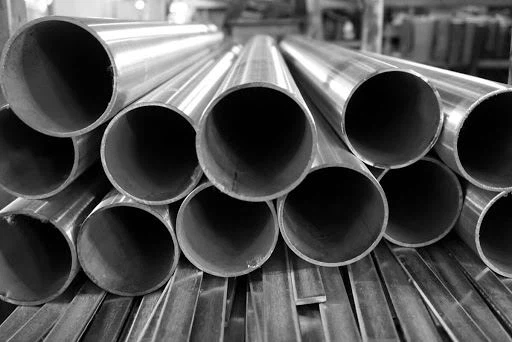
4. Non-uniform grinding and polishing passivation: After manual grinding and polishing, pickling and passivation treatment is performed. It is difficult to achieve a uniform and uniform treatment effect for a large-area workpiece, and it is impossible to obtain an ideal uniform surface. And the cost of working hours and the cost of auxiliary materials are also higher.
5. The pickling ability is limited: the pickling passivation paste is not omnipotent. It is difficult to remove because of plasma cutting and flame cutting and black oxide scale.
6. Scratches caused by human factors are more serious: During hoisting, transportation, and structural processing, scratches caused by human factors such as bumps, dragging, and hammering are more serious, which makes the surface treatment more difficult, and it also causes corrosion after treatment. The main reason.
7. Equipment factor: During the bending and bending of profiles and plates, the scratches and creases caused are also the main causes of corrosion after treatment. Common knowledge of stainless steel surface treatment (4) 8. Other factors: During the procurement and storage of stainless steel raw materials, bumps, and scratches due to lifting and transportation are also serious, which is also one of the reasons for rust.
5. Precautions to be taken
1. Storage, lifting and transportation
(1) Storage of stainless steel parts: There should be a special storage rack, the storage rack should be wooden or painted carbon steel bracket or cushion with rubber pad to isolate from carbon steel and other metal materials. During storage, the storage location should be convenient for lifting and transportation, relatively isolated from other material storage areas, and should have protective measures to avoid the contamination of stainless steel with dust, oil, and rust.
(2) Hoisting of stainless steel parts: When hoisting, special hoisting tools, such as hoisting straps, special chucks, etc. should be used. It is strictly forbidden to use steel ropes to avoid scratching the surface; and when hoisting and placing, avoid scratches caused by impact bumps.
(3) Transportation of stainless steel parts: During transportation, transportation tools (such as trolleys, battery cars, etc.) should be used, and they should be clean and have isolation protection measures to prevent dust, oil, and rust from contaminating stainless steel. Prohibit dragging to avoid bumps and scratches.
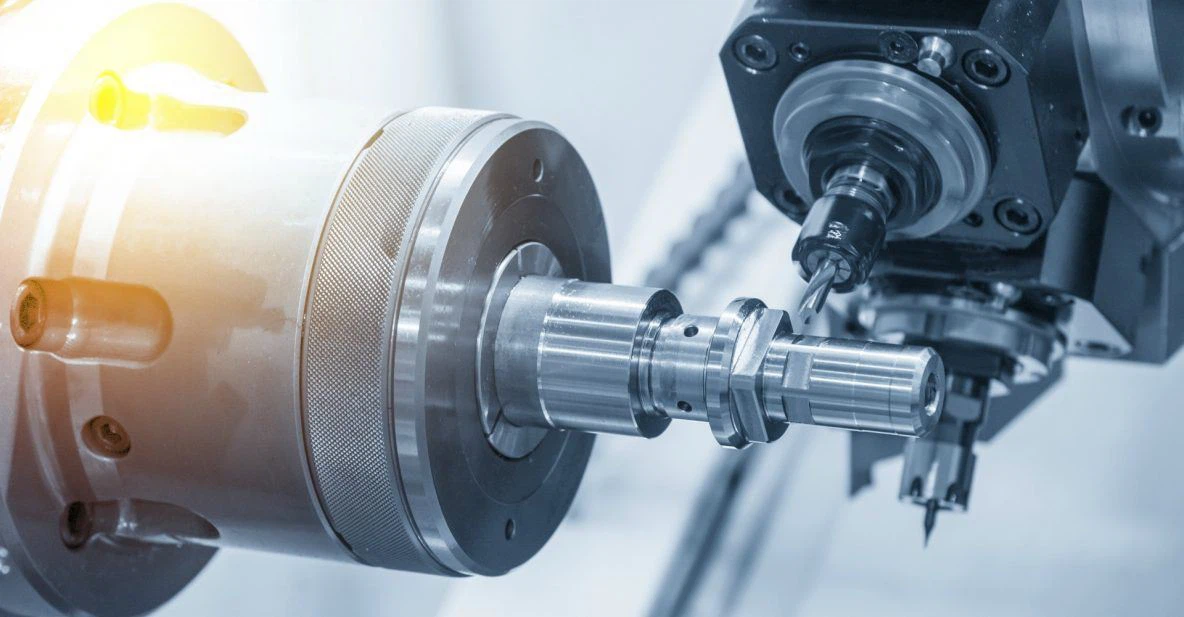
2. Processing
(1) Processing area: The processing area of stainless steel parts should be relatively fixed. The platform of the stainless steel parts processing area should take isolation measures, such as laying rubber pads. The fixed management and civilized production of the stainless steel parts processing area should be strengthened to avoid damage and pollution to the stainless steel parts.
(2) Blanking: The blanking of stainless steel parts adopts shear or plasma cutting, sewing, etc.
①Shearing: When cutting, it should be isolated from the feeding bracket, and the falling hopper should also be covered with rubber pads to avoid scratches.
②Plasma cutting: After plasma cutting, the slag should be cleaned. In batch cutting, the completed parts should be cleaned in time to avoid contamination of the workpiece by cutting slag.
③ Cutting and cutting: When cutting and cutting, the clamping should be protected by rubber. After sawing, the oil and residue on the workpiece should be cleaned.

3. Mechanical processing: Stainless steel parts should also be protected during mechanical processing such as turning and milling. The oil and dirt on the surface of the workpiece should be cleaned up after the operation is completed.
4. Forming process: During the rolling and bending process, effective measures should be taken to avoid scratches and creases on the surface of stainless steel parts.
5. Riveting and welding: When assembling stainless steel parts, it is necessary to avoid forced assembly, especially to avoid flame roasting and assembly. If plasma cutting is used temporarily during the assembly or production process, isolation measures should be taken to avoid contamination of other stainless steel parts by cutting slag. After cutting, the slag on the workpiece should be cleaned.
6. Welding: Stainless steel parts must be carefully cleaned of oil, rust, dust, and other debris before welding. Try to use argon arc welding as much as possible. When using manual arc welding, use small current and fast welding to avoid swinging. It is strictly forbidden to start the arc in the non-welded area. The ground wire is properly positioned and connected firmly to avoid arc scratches. Anti-splash measures (such as white ash and other methods) should be taken during welding. After welding, a flat shovel of stainless steel (carbon steel should not be used) should be used to thoroughly clean the slag and splash.
7. Multi-layer welding: During multi-layer welding, the slag between layers must be removed. In multi-layer welding, the temperature between layers should be controlled, generally not exceeding 60°C.
8. Weld seam: Weld seam joints should be ground, the surface of the weld seam must not have defects such as slag, porosity, undercut, spatter, cracks, unmelted, not fully penetrated, etc. The weld seam and base metal should be a smooth transition, not less Base material.
9. Orthopedics: For the orthopedics of stainless steel parts, the flame heating method should be avoided, especially in the same area is not allowed to be repeatedly heated. When orthopedic, try to use mechanical devices or hammer with a wooden hammer (rubber hammer) or cushion rubber pad and hammering with an iron hammer is prohibited to avoid damage to the stainless steel parts. Common knowledge of stainless steel surface treatment (5)
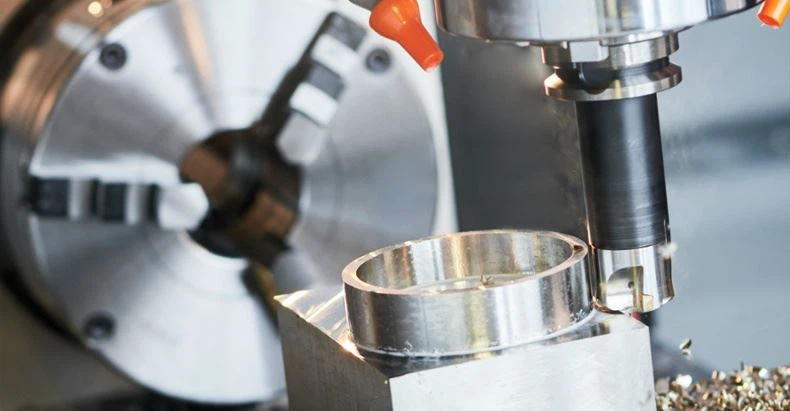
10. Handling: When handling stainless steel parts during processing, transportation tools (such as trolleys, battery cars, or cranes) should be used, and they should be clean and have isolation protection measures to prevent dust, oil, and rust from contaminating stainless steel. It is strictly forbidden to drag directly on the platform or the ground, and knocking and scratching are strictly prohibited.
3. Surface treatment
(1) Cleaning and polishing: If there is any damage, it should be polished, especially the scratches and splashes caused by contact with carbon steel, and the damage caused by slag cutting must be carefully and thoroughly cleaned.
(2) Mechanical polishing: appropriate polishing tools should be used for polishing, which requires uniform treatment and avoids over-throwing and scratches.
(3) Oil and dust removal: Before pickling and passivating stainless steel parts, oil, scale, dust and other debris must be removed according to the process.
(4) Water blasting treatment: according to different treatment requirements, different micro glass beads, different process parameters should be selected, and over-spraying should be avoided.
(5) Pickling passivation: The pickling passivation of stainless steel parts must be passivated strictly in accordance with the process requirements.
(6) Cleaning and drying: After acid pickling and passivation, the neutralization, washing, and drying should be carried out in strict accordance with the process to completely remove the remaining acid.
(7) Protection: After the surface treatment of the stainless steel parts is completed, it should be well protected to avoid the secondary pollution of personnel touching and debris such as oil and dust.
(8) Avoid reprocessing: After finishing the surface treatment of stainless steel parts, reprocessing of the parts or products should be avoided. Compared with 45 steel, the machinability of stainless steel is 1Cr18Ni9Ti stainless steel. The relative machinability of stainless steel is about 0.3-.05, which is a hard-to-cut material. Its difficulty in processing is mainly manifested in:
1. High-temperature strength and high-temperature hardness are high. In general steel cutting, as the cutting temperature increases, its strength will be significantly reduced, and the chips are easy to be cut off, while the stainless steel 1Cr18Ni9Ti still cannot reduce its mechanical properties at 700 degrees, so the chips are not easy Being cut away, the cutting force is large during the cutting process, and the tool is easy to wear.
2. High plasticity and toughness, although the tensile strength and hardness of stainless steel 1Cr18Ni9Ti are not high, the overall performance is very good, plasticity and toughness are high, its elongation, shrinkage rate and impact value are higher, the extension of stainless steel 1Cr18Ni9Ti The rate is 40%, which is 210-237% of 40#, 250-280% of 45#, and 400-500% of 20Cr and 40Cr steel, so the chips are not easy to cut off, curl and break, the function of chip deformation Increased, such as cutting a certain volume of stainless steel 1Cr18Ni9Ti consumes about 50% more energy than cutting the same volume of low-carbon steel, and most of the energy is converted into heat energy, which increases the cutting temperature.
3. Stainless steel 1Cr18Ni9Ti is not easy to process, and the chips are not easy to cut off and break, so the friction heat generated between the tool and the workpiece is also large, and the thermal conductivity of stainless steel 1Cr18Ni9Ti is low (about 1/2-1/3 of ordinary steel), Poor heat dissipation, less heat removed by chips. Most of the heat is absorbed by the tool, which causes the temperature of the tool to increase and exacerbates tool wear.
4. Stainless steel has a strong affinity for other metal materials. Therefore, when in contact with other metals, adhesion will occur under a certain temperature and pressure. During the cutting process, the tool is prone to build-up edge, and it is not easy to obtain a processed surface with a high surface roughness level. 5. Strong work hardening tendency. The strength of austenitic stainless steel is generally δb=539Mpa, but when cold working at room temperature, due to work hardening and deformation will induce martensite transformation, the strength is increased to δb=1568Mpa, which greatly increases the friction, wear and cutting during cutting Force, easy to make the tool wear, and affect the surface roughness of the workpiece.
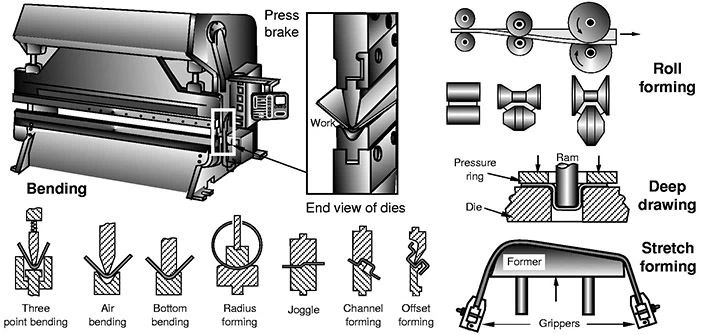
6. There are many fine carbide (such as TiC) particles in the stainless steel 1Cr18Ni9Ti material, which will aggravate the wear of the cutting tool. Low melting point, easy to stick to the knife, easy to form a built-up edge during cutting, due to the high toughness of stainless steel, during the cutting process, there is a lot of pressure and high temperature between the leading surface of the tool and the chip, the chip is easy to stick Attached to the blade, forming a built-up edge, which affects the surface processing quality.
Therefore, the cutting workability of stainless steel 1Cr18Ni9Ti is very poor, especially during intermittent cutting, the tool is prone to wear and bond damage, the tool life is very low, affecting processing efficiency, processing cost, processing accuracy, and surface quality. Tips for tapping stainless steel materials Tapping on stainless steel is much more difficult than tapping on common steel. Frequently, due to the large torque, the tap is "bitten" in the screw hole, the tooth is broken or broken, the surface of the thread is not smooth, the groove, the size is too poor, the buckle and the tap wear are serious. Therefore, when tapping the stainless steel thread, corresponding technical measures should be taken to solve it.
1. When tapping stainless steel thread, the phenomenon of "expansion of teeth" is more serious, and the tap is easy to "bite" in the hole, so the bottom hole of the thread should be enlarged appropriately. In general, the diameter of the threaded bottom hole with a pitch of less than 1mm is equal to the nominal diameter minus the pitch; when the pitch is greater than 1mm, the diameter of the threaded bottom hole is equal to the nominal diameter minus 1.1 times the pitch.
2. Choosing the proper tap and reasonable cutting amount is the key to the quality of tapping. The tap material should be superhard high-speed steel containing cobalt or aluminum; the main declination angle is related to the pitch and the number of taps. The tip cone κr=5°~7°, the two cones, and triple cone are κr=10°~20°; calibration The part generally takes 3 to 4 buckle thread lengths, and has 0.05 to 0.1 mm/100
mm, inverted cone; the direction of the chip flute is generally taken as β=8°~15°, which can control the chip flow direction. For straight flute taps, the tip of the tap can be changed to a spiral shape; the rake angle of the tap is generally γp=15° ~20°, the back angle is 8°~12°.
3. The stainless steel tap can be tapped with a grooveless tap.
4. When tapping stainless steel, ensure that there is sufficient cooling lubricant. Usually vulcanized oil + 15% ~ 20% CCl4; white lead oil + engine oil or other mineral oil; kerosene diluted chlorinated paraffin, etc.
5. In the process of tapping, if the tap breaks, the workpiece can be corroded in nitric acid solution, and the high-speed steel wire cone can be corroded quickly without scrapping the workpiece. Stainless steel washing and maintenance methods The use of stainless steel has become more extensive with economic development. People are closely related to stainless steel in daily life, but many people do not know much about the performance of stainless steel, and they know less about stainless steel maintenance. Many people think that stainless steel will never rust, in fact, stainless steel has good corrosion resistance. The reason is that a passivation film is formed on the surface. In nature, it is in the form of a more stable oxide. That is to say, although the stainless steel has different oxidation levels according to different use conditions, it is eventually oxidized. This phenomenon is usually It's called eclipse.
All the metal surfaces exposed in the corrosive environment have electrochemical reactions or chemical reactions and are evenly corroded. The weak corrosion resistance of the passivation film on the surface of stainless steel forms pitting corrosion due to the self-excitation reaction, forming small holes, and the proximity of chloride ions forms a strong corrosive solution to accelerate the speed of the corrosion reaction. There are also intergranular corrosion cracks inside the stainless steel, all of which damage the passivation film on the surface of the stainless steel. Therefore, the stainless steel surface must be regularly cleaned and maintained to maintain its gorgeous surface and prolong its service life.
When cleaning the stainless steel surface, care must be taken not to cause surface scratches, avoid the use of bleaching ingredients and abrasives, steel balls, abrasive tools, etc. In order to remove the cleaning fluid, rinse the surface with clean water at the end of the washing.
1. If there is dust on the surface of the stainless steel and the dirt is easy to remove, it can be washed with soap, weak detergent or warm water.
2. Trademarks and films on the surface of stainless steel should be washed with warm water and weak detergent. The adhesive ingredients should be scrubbed with alcohol or organic solvents (ether, benzene).
3. Grease, oil, and lubricating oil on the surface of stainless steel should be cleaned with a soft cloth, and then cleaned with neutral detergent or ammonia solution or special detergent.
4. The surface of stainless steel has bleach and various acids attached. Rinse immediately with water, then dip with ammonia solution or neutral carbonated soda solution, and wash with neutral detergent or warm water.
5. There are rainbow patterns on the surface of the stainless steel, which is caused by excessive use of detergent or oil. It can be washed away with warm detergent in warm water.
6. The rust caused by the dirt on the surface of stainless steel can be washed with 10% nitric acid or abrasive detergent, or with special cleaning chemicals. As long as we use the correct maintenance method, we can extend the service life of stainless steel and keep it clean, bright, and gorgeous. The reason why stainless steel will rust When the brown rust spots (dots) appear on the surface of the stainless steel pipe, people are surprised: "Stainless steel is not rusted, rust is not stainless steel, it may be a problem with steel."
In fact, this is a one-sided misconception about the lack of understanding of stainless steel. Stainless steel will also rust under certain conditions.
